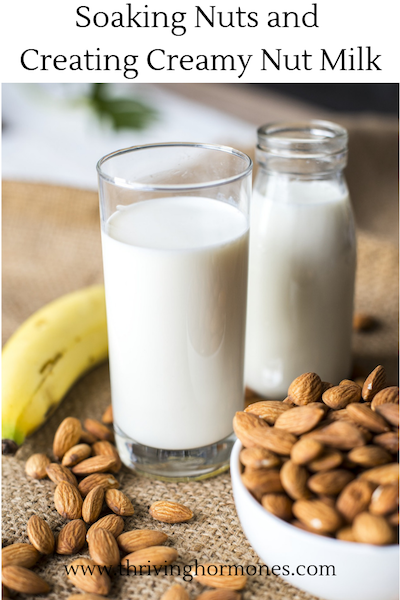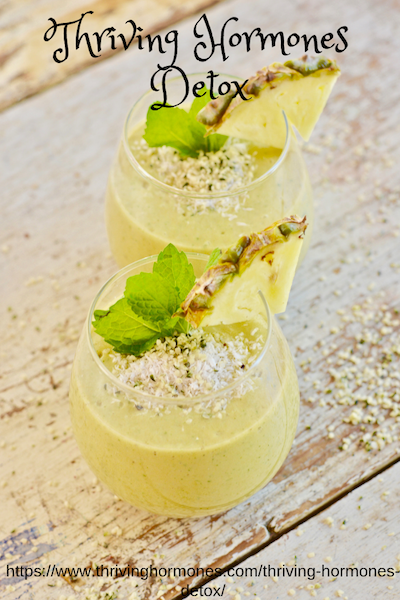Soaking Nuts and Creating Creamy Nut Milk
Nuts are nutritional powerhouses. They need to be soaked and dehydrated or sprouted to capitalize on their nutritional profile and protect ourselves from natural toxins. Soaking nuts is essential for our health.
Benefits of Soaking Nuts:
• helps neutralize enzyme inhibitors
• increases the potency of nutrients such as Vitamin B
• removes anti-nutrients like phytates, tannins, and goitrogens
• makes proteins more available
• promotes the growth of healthy enzymes vital for healthy digestion
• eradicate toxins contained in the colon and encourages the growth of beneficial bacteria like lactobacilli which is essential for intestinal and colon health
Soak-Drain-Rinse Cycle
Have you ever had a terrible stomach ache after eating a lot of nuts?
There are toxic substances that protect nuts from destruction from insects and microbes. The toxins act as enzyme inhibitors in the human digestive process and are bad news for our health if we eat too many of them without soaking them.
The soak-drain-rinse cycle removes enzyme inhibitors such as phytic acid that exist in the skin of the nuts. Enzyme inhibitors are what allows nuts to stay dormant until they are soaked, sprouted, and ready to grow. It’s nature’s way of preserving the life force of the nuts so they can reproduce in the future. This natural protective phenomenon is a good thing for the survival of nuts, but if not neutralized before consumption by humans, it can wreak havoc in our digestive systems when consumed in vast amounts.
Soaking raw nuts makes nuts more digestible and removes bitter flavors without requiring roasting while also increasing the nutritional content of A, B and C vitamins. Soaking nuts in warm salted water activates the beneficial enzymes and neutralizes the enzyme inhibitors making them more digestible.
Soaking them in an acidic, warm water solution (I use lemon juice or apple cider vinegar diluted in water) also encourages the production of friendly enzymes and beneficial bacteria, which, in turn, neutralizes the phytic acid in nuts that strain the digestive system.
Guidelines For Soaking Nuts
For most nuts, the easiest and convenient thing to do is to soak them right before you go to bed. Then rinse, drain and dehydrate as soon as you wake up. Or soak them before you go to work in the morning and then rinse, drain and dehydrate overnight while you are sleeping. Then they are ready to use for breakfast in the morning!
It is essential not over to soak nuts which can compromise flavor, texture and nutritional value. Some nuts like brazil, hazelnut, and macadamia do not have enzyme inhibitors and need only to be rinsed or soaked briefly to soften for blending. Keep in mind, the longer nuts soak, the more waterlogged they become.
“Floaters are bloaters.”
Any nuts that float to the top are generally rancid and they need to be thrown away. It is common to have a few floaters every time you soak. One other thing to note is that with some of the soft, creamy nuts like cashews and macadamias, over soaking can remove some of the rich, healthy oils that are beneficial for your health.
Storage
It is best to store your nuts and seeds in airtight containers in the refrigerator. Nuts can become rancid if exposed to too much light and if they are left sitting around too long. Nuts with more oils such as brazil nuts, pecans, and cashews, macadamia nuts and pine nuts, don’t need to be soaked for a long time.
As for seeds, keep them on shelves or in cupboards. While they do look nice in glass or clear storage jars, it’s best to keep them away from light whenever possible. Hemp seeds are the exception–they are best kept in the refrigerator. (I would delete this and save it for another article)
Soaking and Sprouting Chart:
Homemade Nut Milk
Fresh nut milk is pure goodness. There is nothing better than homemade nut milk. Your smoothies will never taste the same when you add your own fresh nut milk.
Making nut milk is very easy: soak, blend, strain, and drink.
ALMOND MILK
3-4 cups pure water*
1 cup almonds, soaked 4-8 hours and rinsed thoroughly
additional ingredients:
pinch of salt
1-2 T maple syrup
1 T liquid coconut oil
1 T sunflower lecithin
*Amount of water depends on desired creaminess.
ASSEMBLY:
• Begin by making a basic almond milk (almonds and water).
• Add the remaining ingredients one at a time (agave, maple syrup, stevia if you don’t want real sugar in it, salt, coconut oil, vanilla).
• Add the lecithin – the lecithin helps prevent the fat/cream of the almond from separating from the water and should not affect the flavor.
• Blend ingredients and strain through a chinois, nut milk bag or a cheesecloth-lined strainer.
to use the dried almond pulp (almond flour)… – Do you want to say more about this?
My favorite Blueberry Smoothie recipe:
1 C almond milk
1 C blueberries
1 C frozen bananas
1 T honey
1 t vanilla
pinch of salt
Additional Information about the Flavor of Nut Milks:
Cashew milk- rich and creamy, very good for raw desserts
Almond milk- creamy and mild, perfect for baking
Hazelnuts milk- very rich, nutty and earthy, perfect for savory dishes
Brazil nuts milk- Creamy and rich
Macadamia milk- rich and thick, good for desserts and raw cheeses
Hemp seed milk- creamy, thick, nutty
Pecan milk- nutty, earthy
Pistachio milk- rich and creamy
Sunflower seed milk- very nutty and slightly bitter
Pumpkin seed milk- has a strong flavor
Flax seeds milk- smooth
Join my Thriving Hormones Detox here!
In Health,
Angie




